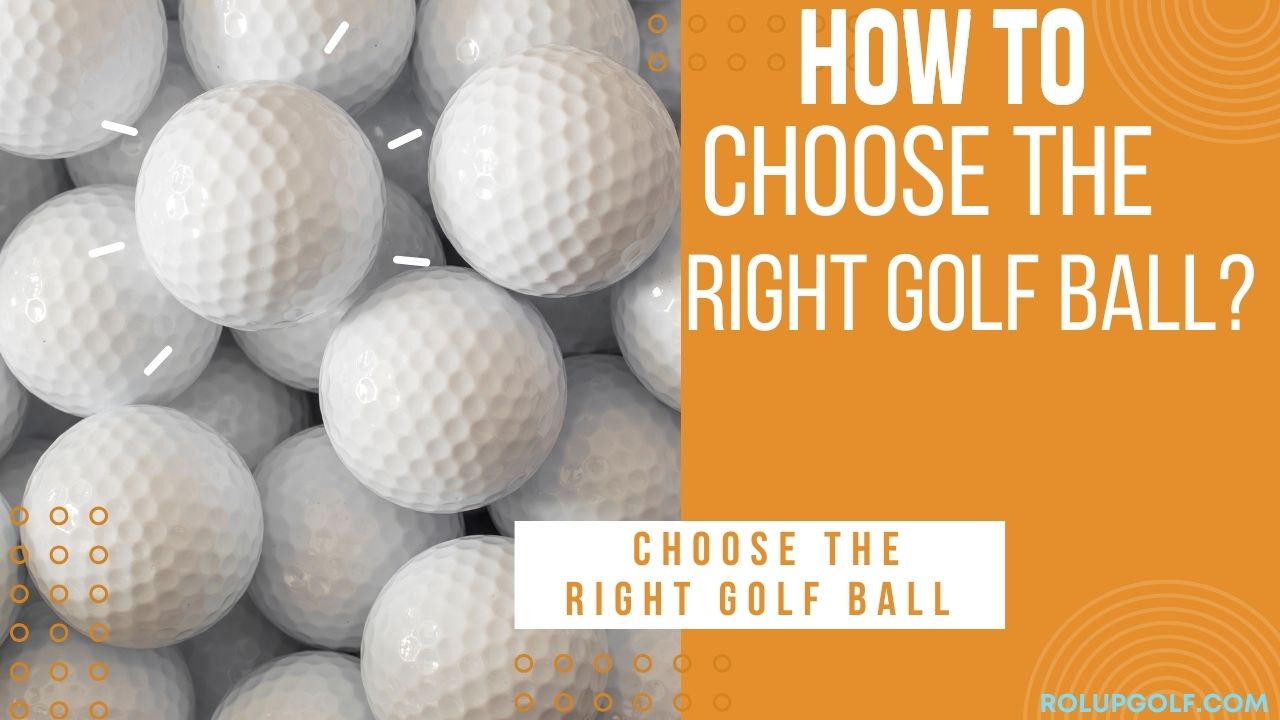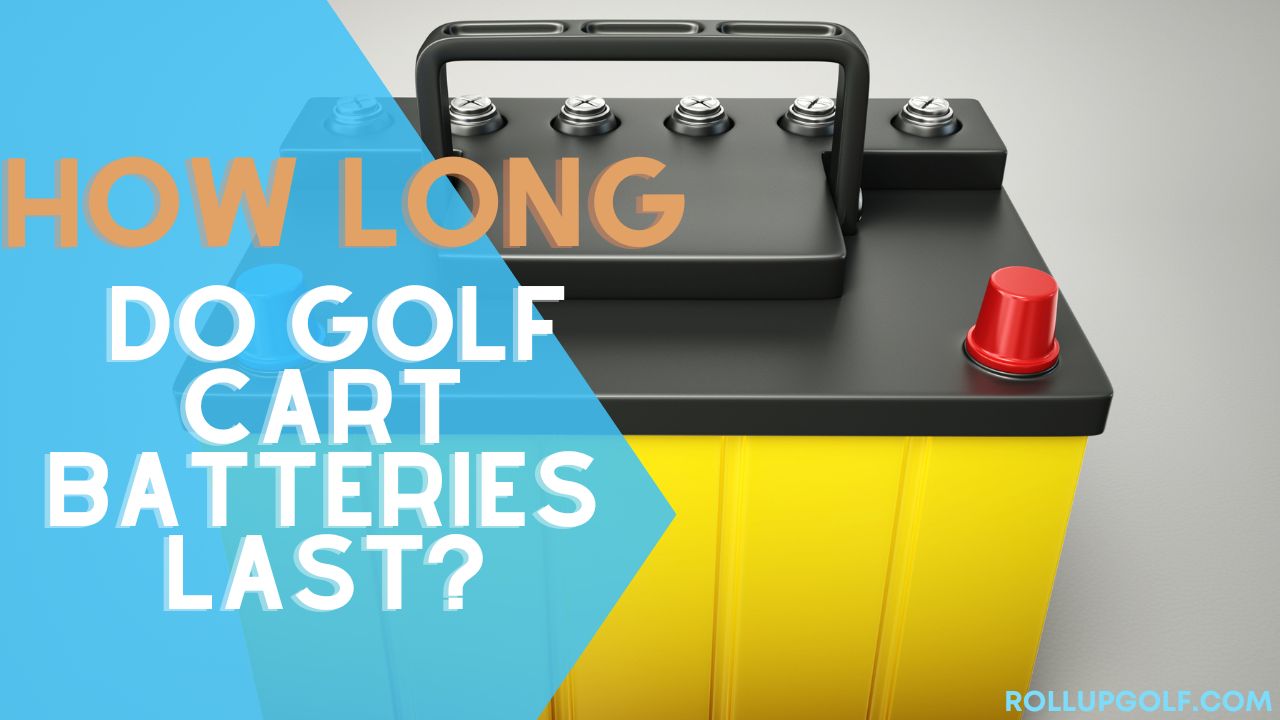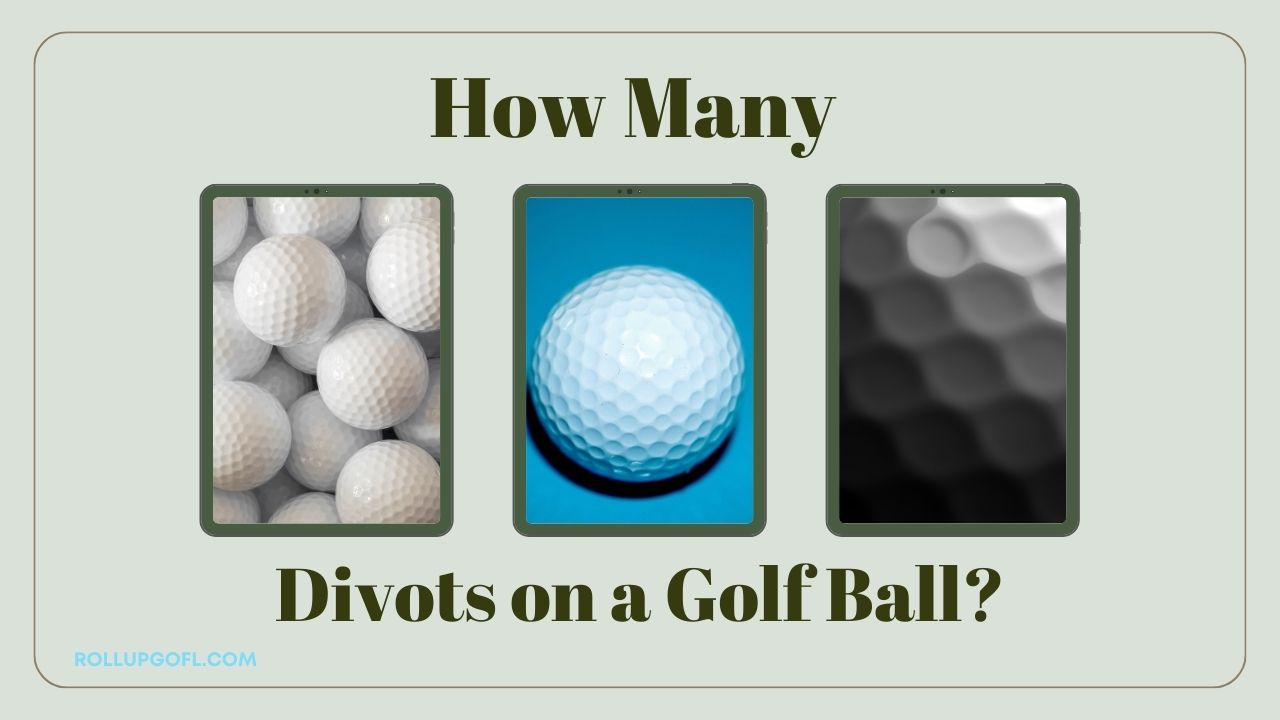
Selecting the perfect golf ball is a crucial decision that often gets overlooked. Every golfer’s game is unique, and finding the right ball tailored to your swing and playing style can significantly improve your performance on the course. we’ll explore: How to Choose the Right Golf Ball, Top 10 golf ball brands, and How do you choose a golf ball based on swing speed.
Read also: How to Make a Gas Golf Cart Faster?
How to Choose the Right Golf Ball?

Selecting the perfect golf ball hinges on a few key factors:
-
Swing Speed: This is a big one. Here’s a general guideline:
- Low swing speed (under 85 mph): Look for softer, low-compression balls that prioritize distance and forgiveness on mishits (think Titleist TruFeel, Callaway Warbird, Srixon Soft Feel).
- Moderate swing speed (85-100 mph): Consider mid-compression balls that offer a balance of distance and control (Titleist Velocity, Callaway Supersoft, Srixon AD333).
- High swing speed (over 100 mph): Opt for high-compression balls that provide more control and spin for skilled players (Titleist Pro V1, Callaway Chrome Soft, Srixon Z-Star).
- Low swing speed (under 85 mph): Look for softer, low-compression balls that prioritize distance and forgiveness on mishits (think Titleist TruFeel, Callaway Warbird, Srixon Soft Feel).
-
Skill Level:
- Beginners: Focus on distance and forgiveness. Two-piece distance balls are a good starting point.
- Intermediate players: Seek a balance of distance, control, and feel. Mid-compression balls with moderate spin are suitable.
- Advanced players: Prioritize control and spin for precise shot shaping. High-compression, multi-piece balls are ideal.
-
Personal Preferences:
- Feel: Do you prefer a soft or firm feel on impact?
- Spin: How much spin do you want on your shots for control around the greens?
- Visibility: White or brightly colored ball? Choose what you see best!
Bonus Tips:
- Try before you buy: Many golf shops offer ball-fitting services to find the perfect match for your game.
- Experiment! There are numerous options, so there’s bound to be a ball that suits your needs and preferences.
- Online ball selector tools: These can provide personalized recommendations based on your swing speed, skill level, and preferences. They’re a good starting point, but trying out different balls is always recommended.
Remember, the perfect golf ball enhances your game. By considering these factors and experimenting, you’ll be well on your way to finding your ideal match!
Read also: Golf cart
How do you choose a golf ball based on swing speed?

Swing speed plays a crucial role in choosing the right golf ball. Here’s how it impacts your selection:
Understanding Compression:
- Compression rating refers to the ball’s firmness, which affects its performance.
- Lower compression balls are softer and better suited for slower swing speeds (under 85 mph). They:
- Maximize distance by transferring more energy at impact.
- Offer forgiveness on off-center hits, minimizing distance loss.
- Higher compression balls are firmer and ideal for faster swing speeds (above 100 mph). They:
- Provide more control due to their ability to handle the impact forces of faster swings.
- Generate more spin, allowing for better shot shaping and stopping power on the greens.
Choosing the Right Ball:
- Generally, choose a ball with a compression rating near your driver’s swing speed in mph. For example, if your swing speed is 80 mph, consider a ball with a compression rating of around 80.
- Slightly lower compression than your swing speed can be beneficial for increasing distance and launch angle, especially for slower swingers. However, going too low might compromise control and feel.
- For moderate swing speeds (85-100 mph), you have some flexibility. You can choose a mid-compression ball for a balance of distance and control, or a slightly lower compression ball for prioritizing distance.
Remember:
- Swing speed is just one factor to consider. The skill level and personal preferences also play a role.
- Experimenting with different balls is highly recommended. Many golf shops offer fitting services to help you find the perfect match for your game.
- Online ball selector tools can provide personalized recommendations based on your swing speed and other factors. However, trying out different balls before making a final decision is crucial.
By understanding the relationship between swing speed and compression, you can narrow down your golf ball options and choose one that optimizes your performance on the course.
Read also: Are Golf Balls Hollow?
Top 10 golf ball brands
- Titleist
- Callaway
- Bridgestone
- Srixon
- TaylorMade
- Volvik
- Wilson
- PXG
- Vice
- Oncore
Understanding Golf Ball Construction
Golf balls may seem simple, but they are engineered marvels with intricate designs. Understanding the construction of a golf ball is the first step in choosing the right one for your game. Most modern golf balls consist of multiple layers, each serving a specific purpose. The materials used in these layers, such as urethane or ionomer, influence the ball’s performance characteristics. Additionally, factors like compression and spin rate play a vital role in how the ball reacts to your swing.
Read also: What Color Golf Ball is Easiest to See?
Matching the Golf Ball to Your Swing Speed
One of the most critical factors in choosing a golf ball is matching it to your swing speed. Swing speed directly affects the compression of the ball upon impact, which, in turn, affects its distance and trajectory. Golfers with slower swing speeds typically benefit from low-compression balls, while those with faster swings may prefer higher-compression options. Determining your swing speed and selecting the appropriate compression level can significantly improve your ball striking consistency.
Types of Golf Balls
Golf balls come in various types, each designed to cater to different aspects of the game. Understanding the differences between these types can help you choose the right ball to enhance your performance on the course.
1. Distance Balls
Distance balls are engineered to maximize the distance traveled off the tee. These balls typically feature a harder cover and a low-spin construction, which helps reduce air resistance and carry the ball farther down the fairway. They are ideal for golfers looking to add extra yards to their drives without sacrificing too much control.
2. Spin/Control Balls
Spin or control balls prioritize accuracy and feel around the greens. They feature softer covers and higher spin rates, allowing skilled golfers to shape their shots and stop the ball quickly on the green. These balls offer enhanced control and precision, making them suitable for players who rely on finesse shots and scoring around the greens.
3. Multi-Layer Balls
Multi-layer balls offer a balance between distance and control, making them a popular choice among amateur and professional golfers alike. These balls feature multiple layers, each designed to optimize performance in various aspects of the game.
They typically have a soft cover for enhanced feel and spin control, coupled with a firmer core for maximum distance off the tee. Multi-layer balls provide versatility and performance across a wide range of shot types and playing conditions.
4. Low Compression Balls
Low-compression balls are designed for golfers with slower swing speeds. These balls compress more upon impact, resulting in increased ball speed and distance for players with less clubhead speed. Low compression balls offer a softer feel and higher launch angles, making them easier to control and more forgiving on off-center hits. They are particularly well-suited for seniors, beginners, and those with limited swing power.
5. High Compression Balls
High-compression balls are tailored for golfers with faster swing speeds. These balls feature a firmer construction that resists deformation upon impact, resulting in lower spin rates and a more penetrating ball flight.
High-compression balls offer enhanced control and workability for players with aggressive swings, allowing them to shape shots and control trajectory with precision. They are favored by experienced golfers seeking maximum performance and distance off the tee.
6. Tour-Level Balls
Tour-level balls are designed for professional and highly skilled amateur golfers who demand the highest level of performance from their equipment. These balls feature advanced construction and materials, optimized for maximum distance, spin control, and feel.
Tour-level balls offer superior performance across all aspects of the game, from driving to putting, and are often used by professional golfers on the PGA Tour and other elite competitions. They provide unmatched consistency and performance for players with the skill to fully utilize their capabilities.
Consideration of Golf Course Conditions
The condition of the golf course you play on also influences your choice of golf ball. Courses with firm fairways and rough terrain may require a ball with more durability and spin control to maintain accuracy and control. Similarly, weather conditions such as wind and rain can affect ball flight and performance, necessitating adjustments in your ball selection strategy.
Budget and Value
While premium golf balls may offer superior performance, they often come with a hefty price tag. However, there are plenty of affordable options available that provide excellent value for money. Balancing quality and cost is essential when choosing a golf ball, ensuring that you get the most out of your investment without breaking the bank.
Brand Reputation and Personal Preference
Brand reputation and personal preference also play a significant role in the decision-making process. Established brands like Titleist, Callaway, and TaylorMade have built a reputation for producing high-quality golf balls trusted by professionals and amateurs alike. However, personal testing and feedback are equally important in finding the right ball for you. Experimenting with different brands and models allows you to identify which one suits your game best.
Importance of Ball Fitting
Ball fitting is a process that matches the characteristics of a golf ball to your individual swing and playing style. While professional fitting sessions offer the most accurate results, self-assessment techniques can also provide valuable insights into your ball preferences. Proper ball fitting ensures that you maximize your performance potential and minimize any shortcomings in your game.
Durability and Longevity
Durability and longevity are often overlooked aspects when choosing a golf ball. Factors such as material durability and resistance to scuffing and wear can significantly impact the lifespan of a ball. Proper storage and maintenance practices also play a crucial role in preserving the condition of your golf balls, ensuring consistent performance over time.
Environmental Impact
As environmental awareness grows, golf ball manufacturers are increasingly focusing on eco-friendly alternatives. Biodegradable materials and sustainable manufacturing processes are becoming more prevalent in the industry, offering golfers environmentally responsible options without compromising on performance.
Tips for Testing and Comparison
Testing and comparing golf balls is crucial for finding the right one that suits your game and preferences. Here are some valuable tips to help you effectively conduct testing and make an informed decision:
1. Define Your Criteria
Before you begin testing, identify the key factors that matter most to you in a golf ball. Whether it’s distance, spin control, feel, or durability, having clear criteria will guide your testing process and help you make a more focused decision.
2. Test Under Various Conditions
To get a comprehensive understanding of how different golf balls perform, test them under a variety of conditions. Try hitting shots with each ball in different weather conditions, on different parts of the course (fairway, rough, bunker), and with various clubs (driver, irons, wedges).
3. Use a Consistent Swing
Maintain a consistent swing throughout your testing to ensure fair and accurate comparisons between golf balls. Use the same club and swing tempo for each shot, and try to replicate your normal swing as closely as possible.
4. Record Detailed Data
Keep detailed notes and records of your testing sessions. Record metrics such as distance, trajectory, spin rate, and feel for each shot with every golf ball. This data will help you objectively compare the performance of different balls and make a more informed decision.
5. Test Short Game Performance
Don’t just focus on distance off the tee; pay attention to how each golf ball performs on approach shots, chips, and putts. Evaluate factors like feel, spin control, and stopping power to assess the ball’s suitability for your short game.
6. Try Different Brands and Models
Don’t limit yourself to a single brand or model of golf ball. Experiment with a variety of options from different manufacturers to see which ones suit your game best. Keep an open mind and be willing to try new brands and models that you may not have considered before.
7. Solicit Feedback
Get input from other golfers, instructors, or club fitters who can offer valuable insights and perspectives. Discuss your testing results with others to gain additional perspectives and considerations that you may not have thought of on your own.
8. Consider Price and Value
While performance is essential, also consider the price and overall value of each golf ball. Determine whether the performance benefits justify the cost and whether the ball offers good value for money based on your priorities and budget.
9. Take Your Time
Testing and comparing golf balls is a process that requires patience and thoroughness. Don’t rush your decision; take the time to conduct comprehensive testing and gather as much information as possible before making your final choice.
10. Trust Your Feel
Ultimately, trust your feelings and instincts when selecting a golf ball. Pay attention to how each ball feels at impact and during your shots, and choose the one that gives you the most confidence and comfort on the course.
By following these tips for testing and comparison, you can effectively evaluate different golf balls and find the perfect one that enhances your performance and enjoyment of the game. Remember to prioritize your criteria, gather detailed data, and trust your feelings to make the best decision for your game.
Real-Life Testimonials and Reviews
Real-life testimonials and reviews from fellow golfers can provide valuable insights into the performance of different golf balls. Success stories and common pitfalls shared by other players can help you avoid potential mistakes and make more informed purchasing decisions. Online forums, social media groups, and golfing communities are excellent resources for accessing firsthand experiences and recommendations.
Future Trends in Golf Ball Technology
The golf ball industry is continually evolving, with manufacturers constantly innovating and pushing the boundaries of technology. From advanced aerodynamics to smart sensors embedded in the ball, the future of golf ball technology holds exciting possibilities. Predictions for the future include balls that adjust their flight trajectory mid-air or provide real-time feedback on your swing, revolutionizing the way we play the game.
Conclusion
Choosing the right golf ball is a crucial aspect of improving your performance on the course. By understanding the construction of golf balls, matching them to your swing speed and playing style, considering course conditions, and evaluating factors like budget and brand reputation, you can find the perfect ball to elevate your game to new heights.
FAQs
- How do I determine my swing speed for ball fitting?
Swing speed can be measured using a launch monitor or by consulting with a professional golf instructor. Alternatively, many golf retailers offer ball fitting services that include swing speed analysis.
- Are premium golf balls worth the investment?
While premium golf balls may offer superior performance, their value ultimately depends on your playing style and preferences. It’s essential to test different options and assess their performance relative to their cost.
- Can I use different types of golf balls in the same round?
While it’s technically allowed by the rules of golf, using different types of golf balls in the same round can lead to inconsistencies in performance. It’s generally advisable to stick to one type of ball throughout your round for optimal results.
- How often should I replace my golf balls?
The frequency of replacing golf balls depends on factors such as how often you play, the conditions you play in, and how well you maintain your balls. As a general rule, inspect your balls regularly for signs of wear and replace them as needed.
- What should I do with old golf balls?
Instead of discarding old golf balls, consider recycling them or donating them to programs that refurbish and redistribute golf equipment to underserved communities. Additionally, some organizations specialize in repurposing golf balls into other products, such as driving range mats or artificial reefs.








